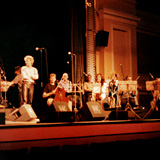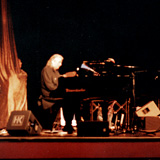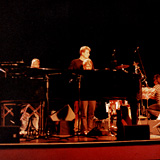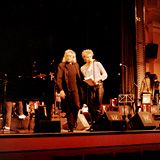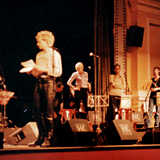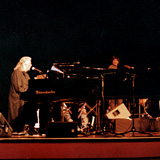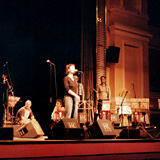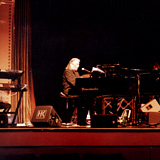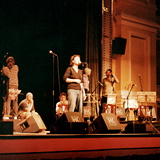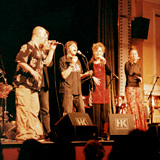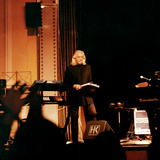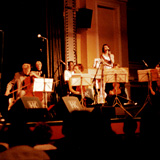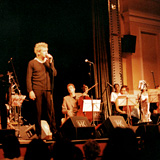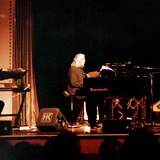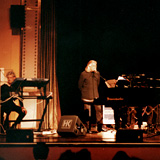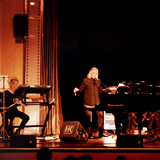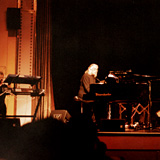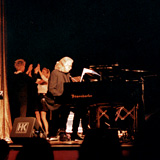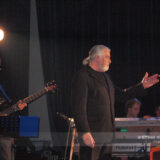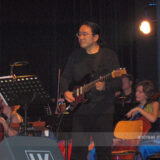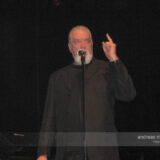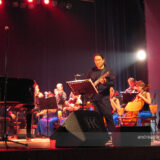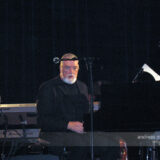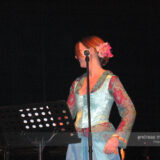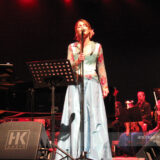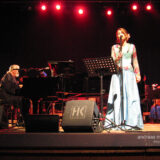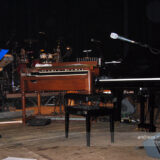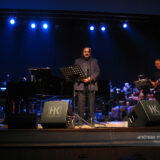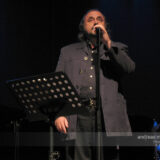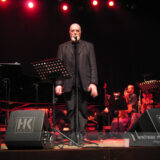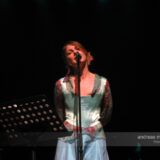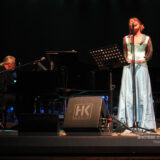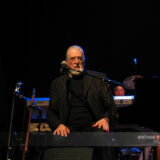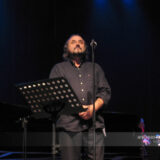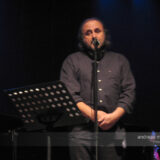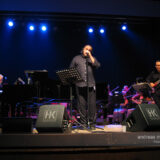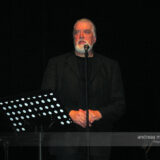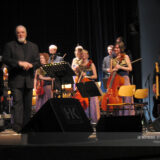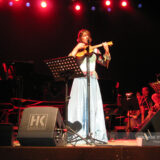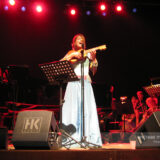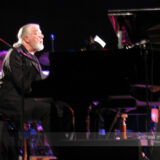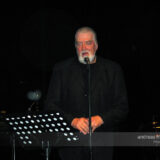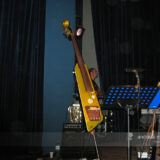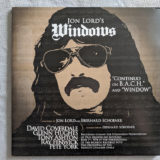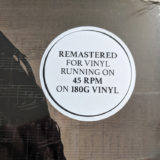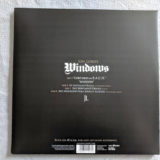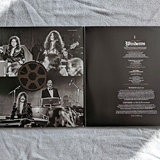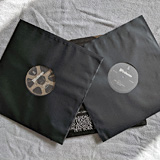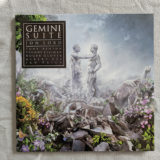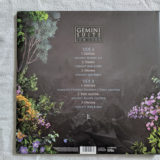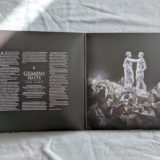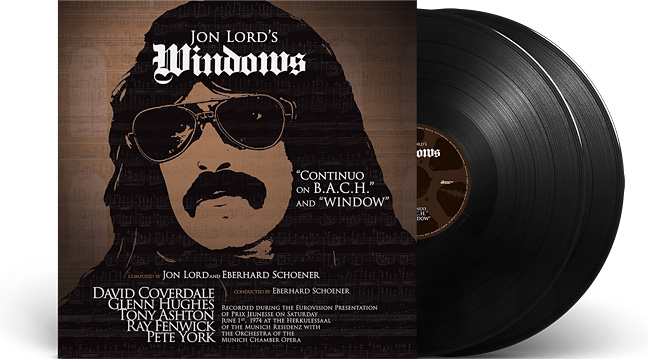
On September 27, 2019 earMusic will continue the series of Jon Lord vinyl re-releases with “Windows”, an album featuring a cooperation between Jon Lord and conductor and composer Eberhard Schoener. Schoener, who was also involved in progressive rock masterpieces like “The Turn of a Friendly Card” by The Alan Parsons Project may also be known for being the creator of the main theme for the TV series “Derrick“.
“Windows” was recorded live at the Herkulessaal in Munich on June 1st, 1974 as closing performance of the “Prix Jeunesse International” festival under the “Rock meets Classic” banner and was broadcasted by German TV station Bayerischer Rundfunk to a potential audience of 300 million people.
The album consists of two parts, the 18 minute piece “Continuo on B.A.C.H.” and the name-giving 32 minute “Window” (without “s”), both composed by Jon Lord and Eberhard Schoener.
“Continuo on B.A.C.H.” plays with the idea of continuing on “The Unfinished Fugue”, the last part of “The Art of Fugue” by Johann Sebastian Bach and features way more Jazz influences than focussing on Jon Lords hard rock background (as the two predecessors “Concerto for Group and Orchestra” and “Gemini Suite” did) using the orchestra more as soloists than using them in a more conventional rock meets classic way.
The first part of “Window”, called “1st Movement – Renga”, was composed by Eberhard Schoener and starts with a more blues-like feeling featuring the voice of David Converdale, later contrasted by two sproaons, who make this part hard to enjoy in its entirety.
As the name hints, the second part “2nd Movement – Gemini” recycles the vocal section from “Gemini Suite”, likely some sort of compromise because Jon Lord and Eberhard Schoener were running out of time. “Windows” was a contract work for the Bayerische Rundfunk to close the Prix Jeunesse International festival and had to be finished in time.
The closing “3rd Movement – Alla Marcia: Allegro”, composed by Jon Lord reminds of “Gemini Suite” but also includes moments which would later become parts of “Sarabande”, Jon Lords following solo work.
The band consited of Jon Lord on piano, organ and keyboards, his Deep Purple bandmates David Coverdale and Glenn Hughes, both on vocals and Glenn also on bass, Tony Ashton on vocals and keyboard and last but not least Spencer Davis Group members Ray Fenwick on guitar and Pete York on drums. The classical section included the Munich Chamber Opera Orchestra conducted by Eberhard Schoener, featuring sopranos Erminia Santi and Sigune von Osten, Günther Salber on violin, and finally well known actor Klaus Löwitsch as narrator.
Sadly the recording doesn’t include leaves out the “Einleitungsfanfare zu Also Sprach Zaratusthra” by Richard Strauss and all narration parts by Klaus Löwitsch without explaination. This might have been because the narration was completely in German and its content hard to guess even for native German speakers. Thanks to Youtube, there is at least a low resolution video of the whole event available for everyone to watch.
While being published on LP in 1974, the first straight-to-CD-transfer of “Windows” was released 1987 by Line Records, followed by a 25th Remastered Anniversary Edition on Purple Records in 1999 and a reissue in 2010. The current vinyl reissue is based on the 2017 CD issue.
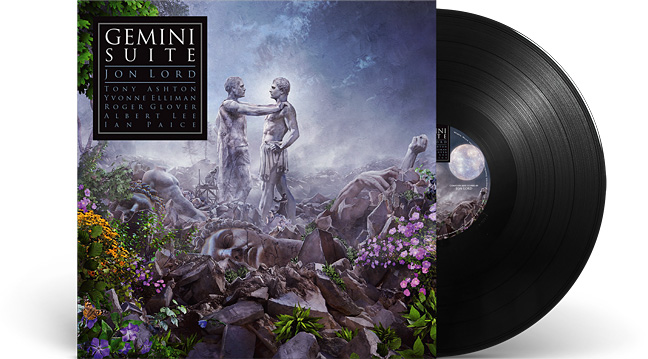
Back in 1969, the lineup of Deep Purple had seen a drastic change: Jon Lord, Ritchie Blackmore and Ian Paice split up with singer Rod Evans and bass player Nick Simper and hired the former Episode Six musicians Ian Gillan and Roger Glover to complete the lineup.
One of the first shows to feature the new lineup was the live performance of Jon Lord’s “Concerto For Group and Orchestra”, an ambitious work to unite the different worlds of a rock band and a full orchestra which lay the foundation for Jon Lords career as composer / writer and solo artist. About a year later, the follow-up of the “Concerto” faced the light of day during a live performance at the Royal Festival Hall, again featuring his Deep Purple bandmates and conductor Malcolm Arnold.
While the “Concerto” had its focus on band and orchestra as a whole, “Gemini Suite” did focus on the different instruments, dedicating a track to guitar, piano, drums, vocals bass guitar and organ respectively. Also contrary to the “Concerto”, which took more than 40 years to be recorded in a studio, Jon Lord went to the studio in 1971 to record “Gemini Suite” as a studio project. At that time, the rock career of Deep Purple was in full flight and Ian Gillan and Ritchie Blackmore showed no interest in participating in the recording and were replaced by guitar player Albert Lee , multi talented Tony Ashton and singer Yvonne Elliman.
The 2019 vinyl release is based on the 2016 remaster by Rob Cass, using the original stereo mixes of the album. Luckily, the remaster doesn’t follow the popular trend of brick-walling every track and preserves the dynamics and overall feel of the original recording.
There’s still no explaination why the original artwork has been dropped and was replaced by completely new design, but the 2016 foreword by Roger Glover is also included on the inner sleeve.
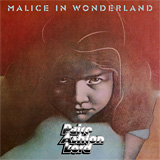 When Deep Purple disbanded in 1976, Jon Lord and Ian Paice decided to start a new band, not trying to recreate what they already had with Deep Purple but to explore new musical directions.
When Deep Purple disbanded in 1976, Jon Lord and Ian Paice decided to start a new band, not trying to recreate what they already had with Deep Purple but to explore new musical directions.
As frontman they recruited singer and keyboard player Tony Ashton. Jon Lord had already collaborated with Tony Ashton composing the soundtrack for “The Last Rebel” (published 1971 as “Musical score composed by Tony Ashon & Jon Lord, performed by Ashton, Gardner & Dyke”) and on “First Of The Big Bands” (published 1974 as “Tony Ashton & Jon Lord”), an album which could be seen as some sort of blueprint for “Malice in Wonderland”.
The lineup was completed with Paul Martinez on bass and Bernie Marsden on guitar, a brass section fronted by Howie Casey and two female background singers, Sheila McKinley and Jeanette McKinley.
The recordings took place in Munich in autumn 1976 in basement studio of the Arabella hotel (inspiration for the song “Arabella”) and the album was released in early 1977, surprising many Deep Purple fans with a mix of Rock, Blues, Funk and Jazz.
To promote the album, a tour covering major European cities had been planned, but as tickets didn’t sell as expected, most dates were dropped from the oncoming tour, leaving just five British dates to be performed.
As time went by, Tony Ashton felt more and more uncomfortable with his role as frontman of PAL and it also turned out the fans needed more time to adjust to the sound of Paice Ashton Lord as expected. By the end of 1977, the band started the recordings for a second album, but as the momentum was gone the album was never finished and the band called it quits in 1978.
“Malice In Wonderland” will be reissued on May 17 2019 by earMUSIC, using the 2001 remaster by Nick Watson for the tracks of the original album. The release will also include eight bonus tracks from the never finished second album, remastered in 2019 by Eike Freese. The booket contains previously unpublished photographs by Alan Messer and detailed liner notes by Simon Robinson.
Sadly the reissue misses the opportunity to include the “Sight & Sound In Concert” live recording, which would have been a perfect addition to this otherwise fine release of an impressive album.
